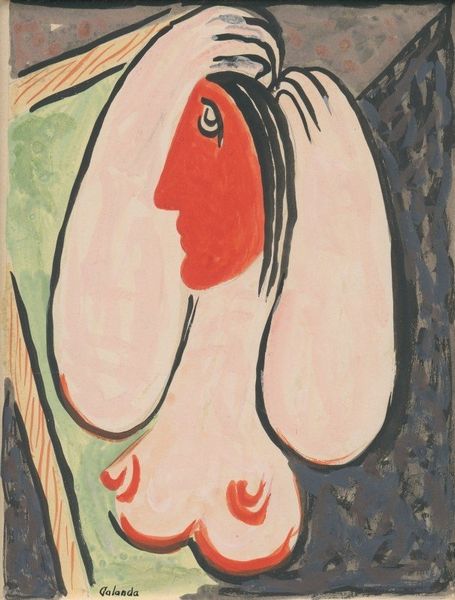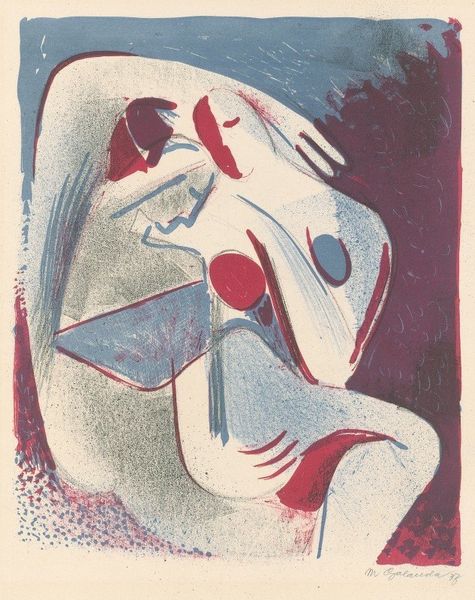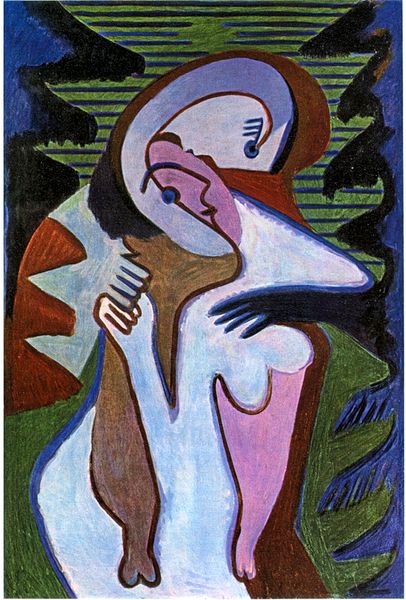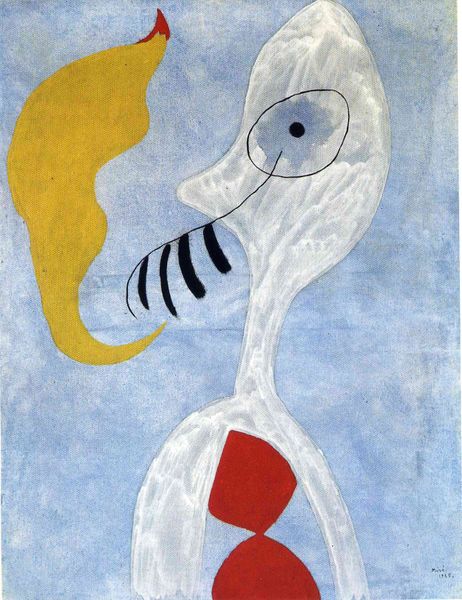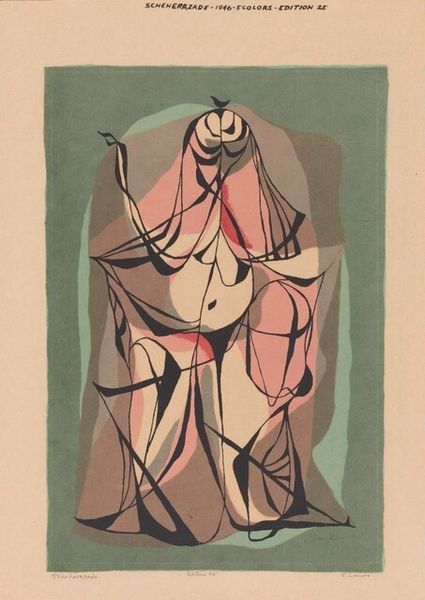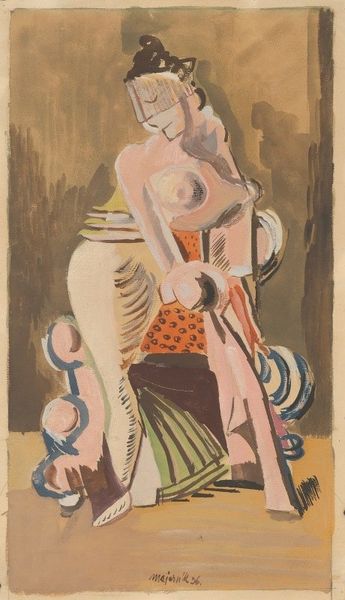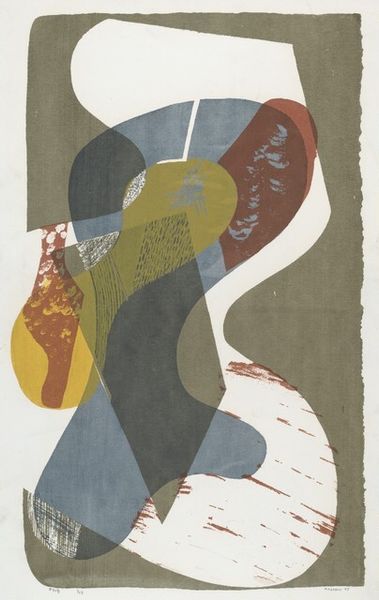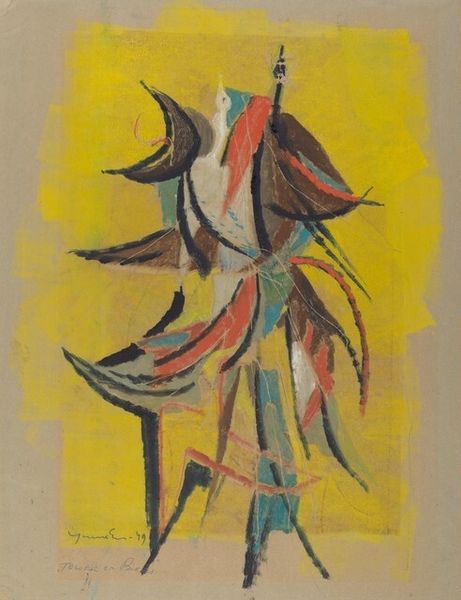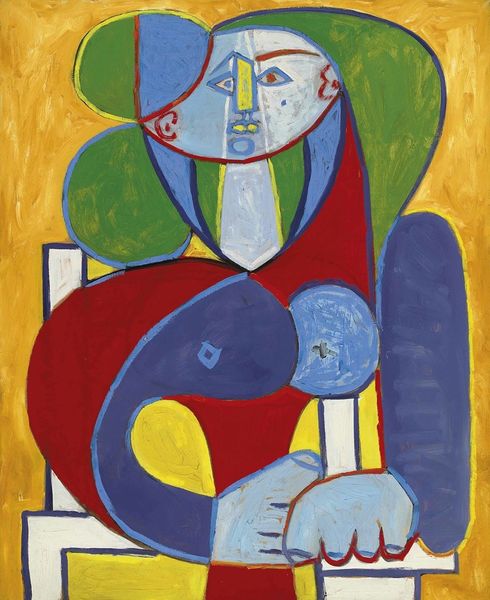
painting, oil-paint
#
portrait
#
painting
#
oil-paint
#
caricature
#
figuration
#
abstract
#
intimism
#
abstraction
Copyright: Public Domain: Artvee
Curator: Let's take a look at Mikuláš Galanda’s “Fire” from 1938, an oil on some sort of supporting board, maybe paperboard. It presents a stylized female figure, quite arresting actually. Editor: My first impression is how unsettling it is! The colors are intense, clashing almost. Is it fire as in passion, or fire as in destruction? The way the figure hides her face suggests vulnerability, yet that stark red skin hints at a potent force barely contained. Curator: I think you are right to focus on the material deployment in relation to the unsettling impact of color. What's so striking here is Galanda's strategic combination of the medium and his expressive handling. The paint is applied very directly with defined edges, giving the figure this powerful, yet somehow manufactured aesthetic. Consider the materials Galanda had to hand and how those might have conditioned what he was trying to express. Editor: That’s interesting because, for me, it evokes broader conversations about female representation at that time. The figure's body is objectified, but there's a rawness too. The drips coming from her breasts evoke vulnerability. Is Galanda commenting on the societal pressures placed on women, their role reduced to fertility and forced passion? Curator: It is worth acknowledging that Galanda's earlier work involved direct folk iconography. Yet he sought to synthesise the symbols available from Slovak culture to create a unique visual language to suit modern demands. I can imagine that the intensity of color must come at a price in the pigmenting process. Editor: And how did this unique modern idiom position itself, within broader art movements and the socio-political ferment bubbling away at that moment? Did the use of 'folkloric' ideas provide symbolic safety or camouflage, to enable critique? I’m also curious about how Galanda considered his audience, as there's nothing comfortable here, or readily soothing. Curator: Considering those questions of comfort and critique helps clarify Galanda’s experimental deployment of a raw artistic idiom. "Fire" embodies a material synthesis shaped by social and political realities. The final arrangement suggests more of a pilot project for some, as-yet unrealised, ambition. Editor: A fiery synthesis, then! A discomforting glimpse of raw, untamed power. Galanda forces us to confront difficult truths about identity, representation, and societal expectations.
Comments
No comments
Be the first to comment and join the conversation on the ultimate creative platform.
